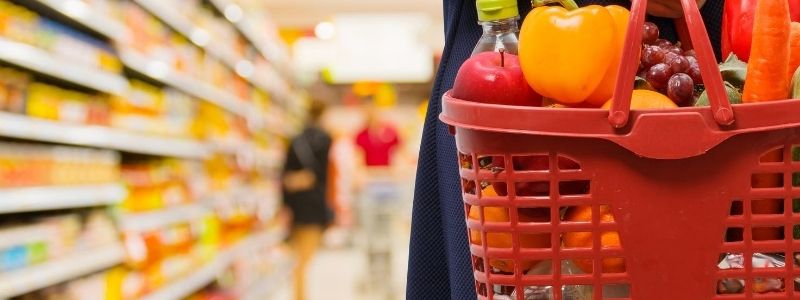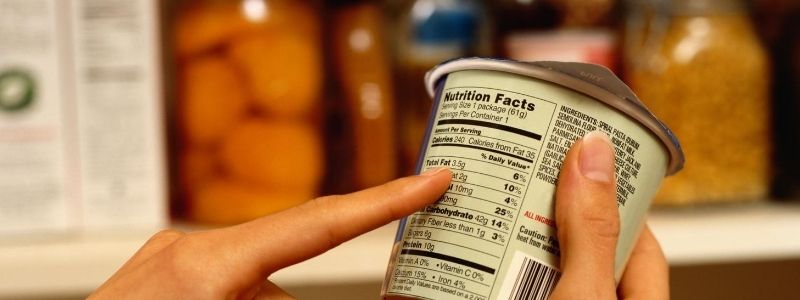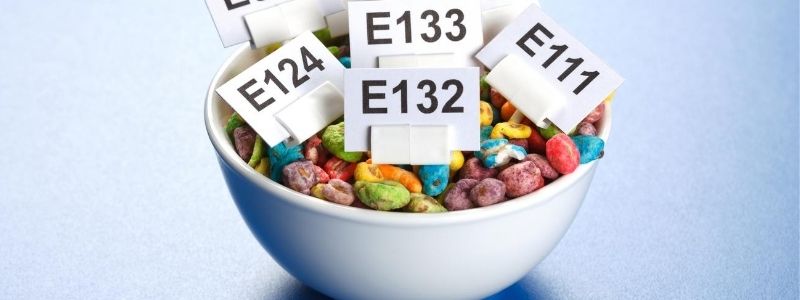
By Paris Papachristou, Avraam Kazis & Evangelia Panagiotopoulou
For the average consumer, it is not easy to quickly and easily identify the right choices among the countless shelves of the supermarket.
To be able to do this, one must be familiar with a series of basic facts, such as knowing how to read nutrition labels, understanding that different individuals have different nutritional needs and recognizing their own, as well as being able to organize balanced meals for themselves and their family.
In this way, the consumer will be able to incorporate all types of foods into their own healthy and balanced diet.
We will present some basic principles that will help you choose the right foods easily and quickly, among the countless temptations you encounter daily in supermarkets.


Before going to the supermarket, make sure to dedicate as much time as needed to prepare your shopping list. It will save you both time and money.
Start by deciding now on your seven main meals for the week, taking into account how many times you'll have time to cook and how often you'll need to prepare something quick and easy (like pasta, frozen meals, canned goods, etc.).
While creating your list, check that it includes foods from all the main food groups: meat, dairy products, carbohydrates (bread, cereals, starchy foods, pasta, rice), vegetables, fruits, and fats-oils. This ensures that your weekly meal variety is nutritionally complete and provides all the necessary nutrients.
Also, beyond the basics, don’t forget about snacks. Be sure to choose healthy options such as cereal bars, yogurt desserts, popcorn, nuts, etc.
You can hear more in the interview I gave on Ant1 Radio with Konstantinos Laskaratos, where I talked about what to pay attention to when preparing a supermarket shopping list.
But even with the list — what stops us from craving things?
That’s where our blood glucose comes into play. A great idea before going shopping is to have a small snack. Eating it will raise your blood sugar, helping you feel full and making it less likely that cravings will lead you to overload your shopping cart.
Be especially careful with special offers. Often, you end up buying more than you need, and to avoid wasting it, you consume it all. This isn’t usually the case with fruits and vegetables, though, as they tend to be the foods we throw away most often. During times of economic crisis, people’s body weight tends to increase because cheaper food choices are usually also less healthy. This leads to weight gain accompanied by malnutrition.
So every time you go shopping, remember the Mediterranean diet model — and stick to it.

Fresh Products
Fresh products have a short shelf life, so make sure not to buy more than you can consume before they expire.
Meat, fish, poultry, eggs
These foods provide high-quality protein. Be careful about their quality and remember that they can be safely stored in the freezer for a considerable amount of time.
Dairy products (milk, cheese, yogurt)
Choose products that are low in fat and, depending on your individual needs, possibly those that are fortified with calcium, iron, phytosterols, etc.
Frozen meals
These are usually easy to prepare and nutritionally adequate foods that can be included in your breakfast, lunch, or dinner, or even enjoyed as a dessert. Read the nutrition labels and select the products that best suit your personal dietary needs.
Bread, cereals, pasta, rice
Your choices from this food group greatly affect the fiber content of your diet. Look for whole grain products to increase your fiber intake.
Legumes, nuts
For those who love legumes, there is a wide variety available on supermarket shelves (lentils, chickpeas, peas, split peas, beans of many kinds). Legumes provide significant amounts of fiber, folic acid, and protein, while nuts are great sources of monounsaturated fatty acids, vitamin E, selenium, and protein.
Canned foods
Many types of foods are available canned, such as vegetables, fruits, seafood, etc. They are useful to have at home as they have a long shelf life and offer quick and easy meal solutions. However, pay close attention to the nutrition labels and consume them in moderation.
Occasional snacks
Foods like chips, sweet biscuits, chocolate, and desserts are the most common snack options and are rich in fat, sugar, or salt. They can be consumed occasionally but should not be your daily go-to snacks.
If you're unsure whether a snack food is suitable for daily or occasional consumption, check the nutrition label.

In recent years, the listing of dietary information on food labels has become mandatory. Food manufacturers see labels as a tool to persuade you to buy their product over a competitor’s.
Just walk down the cereal aisle the next time you're in the supermarket, and you'll notice the incredibly large number of options available. Regulatory bodies introduced nutritional labeling to include the key nutritional characteristics of a product in order to help consumers make informed dietary choices.
There are specific regulations for foods intended for children under the age of 2, and different ones for children under the age of 4. Also, providing nutritional information is currently optional for many raw foods, such as fresh fruits, vegetables, and fish.
Read labels carefully
When a food label says “Cholesterol-free,” it means the product contains no cholesterol—but you should be aware that it may still contain saturated (animal) fat, which also raises blood cholesterol levels.
So identifying the fat, cholesterol, or salt content in a product means reading its label. At first, this may seem difficult or tedious, but in the end, it can prove to be both interesting and enjoyable.
By reading the labels of packaged foods, you learn more about the product. Labels usually express nutritional values in calories (Kcal) per 100 grams of the product you purchased.
| Nutritional Information | Per 100 g | Per serving (30 g) | % R.I.* |
| Energy | 1578 kJ/ 372kcal | 475 kJ/ 112 kcal | 6% |
| Fat | 1.4 g | 0.4 g | 1% |
| of which saturates | 0.4 g | 0.1 g | 1% |
| Carbohydrates | 78.4 g | 23.5 g | 10% |
| of which sugars | 17.2 g | 5.2 g | 6% |
| Fibre | 5.9 g | 1.8 g | 13% |
| Protein | 8.4 g | 2.5 g | 18% |
| Salt | 1.25 g | 0.4 g | 6% |
*R.I.: Reference Intake according to the nutrition labeling directive 2008/100/EC.
Saturated Fatty Acids
Pay attention to the content of saturated fatty acids, which can be harmful to your heart, especially if your cholesterol levels are elevated.
Sodium
Be mindful of the sodium content. [RDI: 2 grams]
Dietary Fiber
Dietary fiber is beneficial for the body. Its presence is essential for managing constipation and for the prevention of colorectal cancer.
Vitamins, Minerals, and Trace Elements
As for vitamins, minerals, and trace elements, these are also listed as the amount obtained by consuming 100 grams of the product. The percentages displayed refer to the Recommended Daily Intake (RDI) obtained by consuming 100 grams of the product.
For example, by eating 100 grams of the product shown in the image next to the text, you receive 169% of the recommended daily intake of Vitamin E.
Ingredients on the Label
Food labels must include a list of the ingredients contained in the product. These ingredients are listed in descending order by weight. The ingredient present in the largest amount is listed first, while the one present in the smallest amount is listed last.
If a food product contains—or may contain—even traces of ingredients that could cause allergic reactions, it is mandatory to declare them, either descriptively (“may contain traces of...”) or in bold within the ingredient list.
Additionally, it is mandatory to label any product that contains or is derived from Genetically Modified Organisms (GMOs).
Comparison of nutritional information between two hypothetical cereal products:
| Calories | Carbohydrates | Sugars | Fats | Saturated fats | Proteins | Salt |
Whole grain |
|
| Type 1 | 367 kcal | 74.8g | 10.8g | 1.7g | 0.5g | 9.4g | 0.95g | 58% |
| Type 2 | 375 kcal | 79g | 15g | 1.5g | 0.3g | 9g | 1g | 32% |
*The above values refer to 100g of the product.
Food labels must list the product’s ingredients in order of weight, with the ingredient present in the largest amount listed first. Conversely, the ingredient present in the smallest amount is listed last. For example, if you want to increase your intake of dietary fiber and essential nutrients, choose breakfast cereals where whole grain is listed as the first ingredient.

It is estimated that the average consumption of preservatives and food additives per person reaches about 4-5 kilograms annually. In recent years, the use of various preservatives and food additives has been the subject of extensive debate and controversy, especially regarding their short-term, but primarily long-term, potential effects on human health, particularly in young children.
Certainly, some preservatives are absolutely necessary to inhibit the growth of pathogenic microbes in foods, and some additives are completely safe and beneficial for public health (e.g., ascorbic acid, used as an antioxidant and identical to vitamin C). However, many additives are suspected of causing various health problems, mainly in children (hyperactivity, allergies, asthma, rashes) and in adults (allergies, asthma, headaches, dizziness, tachycardia, nausea, intestinal ulcers).
In addition to the above, other important information appears on food labels such as the net weight of the product, consumer contact lines with the producing company, nutritional claims (e.g., high in dietary fiber, low in fat, etc.), ecological labeling, and more.
Very often, on nutritional labels, we encounter certain words:
| Special phrases on food labels | Explanation |
| Calorie-free or without calories | These foods contain fewer than 5 calories per serving. |
| Fat-free or fat-free ("no added fat" and "zero fat") | These foods contain approximately 0.5 g of fat per serving. |
| Cholesterol-free or without cholesterol | These foods contain less than 2 mg of cholesterol and should also contain less than 2 g of saturated fat per serving. |
| Foods low in sodium salt | Suitable for low-salt diets. Consuming a specific amount of these products provides you with half the amount of sodium compared to the regular product. |
| Unsalted or without additional salt | No salt has been added to these foods. |
| Reduced-calorie, fat, cholesterol, or sodium products | The food contains at least 25% less fat, cholesterol, calories, or sodium compared to the corresponding regular food. |
| Diet products | These products are either low in calories or reduced in calorie content, or intended for some other special use in a diet. |
| Light products | This means that the food has 1/3 fewer calories or 1/2 less fat or 1/2 less sodium than the regular food. Be careful, as the term "light" may also refer to the color or texture of the food. |
| Healthy foods |
These foods are low in total fat and saturated fat. Additionally, they must not contain higher amounts of cholesterol or sodium than those recommended by the Food and Drug Administration. This label does not mean that the food is free of sugar, nor does it necessarily mean it is suitable for your diet. |
| Natural foods | Be cautious with this term. There is no clear definition yet of what "natural" means. Natural does not necessarily mean healthy. |
| Hydrogenated or partially hydrogenated fat | This means that unsaturated fat has been made more saturated by the addition of hydrogen, so that it becomes solid at room temperature. |
| Packed in water | Canned tuna or salmon packed in water instead of oil contains less fat. |
| Wheat flour |
This refers to white flour and not whole wheat flour. Whole grain foods are better choices because they contain more dietary fiber. |

“Protected Designation of Origin (PDO)”
The name of a region, a specific place, or, in exceptional cases, a country, used to describe an agricultural product or foodstuff that originates from that specific region, place, or country, whose quality or characteristics are essentially or exclusively due to the particular geographical environment including inherent natural and human factors, and whose production, processing, and preparation take place in the defined geographical area.
“Protected Geographical Indication (PGI)”
The name of a region, a specific place, or, in exceptional cases, a country, used to describe an agricultural product or foodstuff that originates from the said region, place, or country, whose specific quality, reputation, or other characteristics can be attributed to that geographical origin, and whose production and/or processing and/or preparation take place in the defined geographical area.
The recognition of agricultural products and foods as PDO and PGI available on the market benefits producers, processors, etc., because the fair competition developed among those entitled to these designations enhances the credibility of these products in the eyes of consumers. Producers, especially in disadvantaged and remote areas, have the opportunity to easily promote products with specialized characteristics, improving their income with better market prices. It also benefits consumers, who should have clear and concise information about the product’s origin and be able to purchase products guaranteed for their quality and characteristics.
Before deciding to go shopping, it is good to make a list of what you need. After assessing your needs and what is missing, you will complete this list, which will serve as your shopping guide. This way, you can know what is necessary and what is unnecessary and avoid pointless purchases. However, before choosing the foods on your list, check their labels because this will help you decide whether to include them in your diet based on your individual needs. Pay attention to the information on the label to make the right choices for your diet and health.
Source: Mednutrition.gr